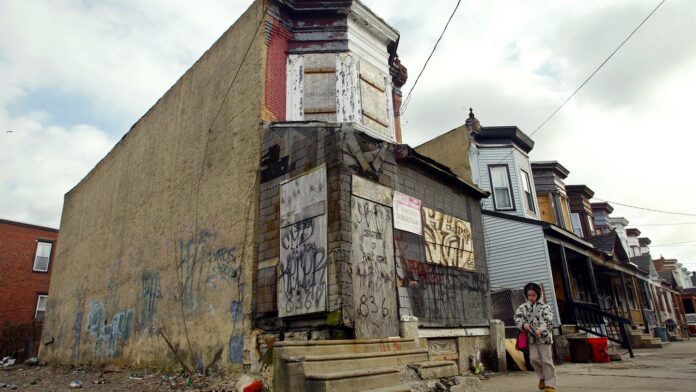People who received blood pressure treatment in low-income areas were half as likely to control their blood pressure as people treated in higher-income areas, according to a new analysis of research trial data.
In addition to worse blood pressure control, trial participants in the lowest-income treatment sites also had higher rates of heart failure-related hospitalization or death, severe kidney disease and death from any cause, but lower rates of angina hospitalizations and coronary revascularizations. People in these areas were more likely to be female, black, Hispanic, live in the South, and have lower education and fewer cardiovascular risk factors, yet the unfavorable outcomes remained after researchers adjusted for medication treatment arm and demographic and clinical characteristics.
Previous studies observed that living in a lower socioeconomic neighborhood is associated with a higher prevalence of high blood pressure and less blood pressure control. But such trials typically provide participants with equal access to care, such as by providing medications for free and giving specific instructions. That’s why this study’s differences in outcomes, despite its standardized treatment protocol, are notable.
This study highlights the importance of measuring socioeconomic context, which can be useful for interpreting and applying trial findings to diverse populations. Although patients had equal access in theory to resources like medications, health care providers and other assets, patients may not access these resources equally in practice.
For example, certain outcomes were impacted by visit adherence. Participants in the lowest-income sites were less likely to attend the prescribed number of health care visits than those in the highest-income sites. Visit adherence and related factors like access to transportation and social support could impact outcomes.
The findings suggest that efforts to improve blood pressure should go beyond the immediate behaviors that influence blood pressure control and address the broader factors that influence the immediate behaviors. These broader factors cluster around social determinants of health, such as economic stability, neighborhood and built environments, education, and social and community context. For example, even if medication is provided for free, a patient still must travel to a location to pick up the medication, which requires access to transportation or public transit.
A holistic approach to addressing the many factors influencing health behaviors brings additional complexity, but it’s a necessary step in the pursuit of more equitable health outcomes.
This article touches on the significance socio-economic factors have on blood pressure. Although there is lots of data linking physical health and genetic factors to blood pressure, other factors can play a large role in hypertension and the control of it. This study is interesting because it focuses on how placing medical facilities in lower-income areas does not equalize accessibility of blood pressure control. As the article mentions, other indirect factors can keep community members from utilizing these resources.
This is significant to consider when designing because the proposed solution should be inclusive and accessible for all socio-economic levels. Further, this suggests that a solution may lie within these indirect factors. Transportation access to medical facilities, education on prevention strategies, economic burden of the solution, and societal pressures are some of the most noteworthy components to evaluate. If the solution considers these indirect factors, it will be more inclusive and help fill the inequality gap between economic status and heart health.




